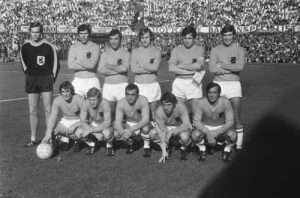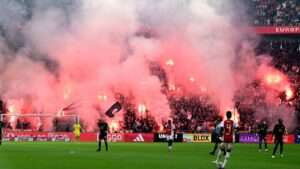“I think the World Cup victory for Spain was not so much that of a team but rather the victory of an idea.”
These are the words of La Masia director Carles Folguera, and when you consider that seven of the 14 players involved in Spain’s 1-0 2010 World Cup final win over the Netherlands came through La Masia, it is hard to disagree.
Origins:
In October 1979 Barcelona turned the La Masia building just outside their Camp Nou stadium into a halls of residence for young players living outside the city. It is now one of the most productive youth academies in the world.
It was new president Josep Lluís Núñez’s idea to put the building back into use. Previously it had acted as a workshop in which the architects and builders of the Camp Nou modeled their project and then from 1966, the club’s social headquarters.
The residence is used to develop the young players that have had to leave their families to train with the Catalan club. While there is much emphasis on turning the youngsters into accomplished performers on the field, La Masia also strives to develop rounded human beings.
Graduates:
Iconic stars of the game to have graduated in recent years include Lionel Messi, Andres Iniesta, Xavi, Gerard Pique, Pedro, and Cesc Fabregas.
Other players to have lived at La Masia and gone on to play for the first team include Guillermo Amor, Josep Guardiola, Sergi Barjuan, Ivan De la Peña, Carles Puyol, Pepe Reina, Víctor Valdés and Gabri.
Players to have resided at La Masia are not just limited to those from Catalonia or the rest of the state, but other countries too. Messi is a prime example, having moved from Argentina when he was 13.
The actual La Masia building houses 12 boys and another 48 sleep in other rooms situated around the stadium.
Philosophy:
“The player who has passed through La Masia has something different to the rest, it’s a plus that only comes from having competed in a Barcelona shirt from the time you were a child,” said Barcelona coach Guardiola.
Players at the academy are taught that technique is a vital prerequisite. The principles of Total Football are drilled into the players, together with traditional Spanish one-touch play (tiki-taka). Total Football originated in the Netherlands and requires players to move in a fluid formation, often changing positions. Tiki-taka is the name given to a style of play based on reaching the goal through short passes and movement, with Xavi and Iniesta prime exponents of this.
“The main thing that the scouts look for is that the children make decisions differently from everybody else,” Folguera told Sky Sports. “By this I mean their speed of thought. It is a quickness of mind we look for. Already at 12 or 13 they understand that football is played within a particular style.”
The regional nationalism of the club’s supporters means La Masia is a source of pride, and when Barca won six trophies in 2009 with so many academy graduates, it was seen as a triumph of philosophy and identity.
“I think the two most important qualities for the boys are comradeship and humility,” says Folguera. “These guys might have been chosen to be part of Barca but it is humility that earns you respect. We don’t want them to go around talking about huge amounts of money. You can be humbled if your surrounding are, but it’s tough. But take Iniesta – he is not arrogant, he more or less goes unnoticed.”






